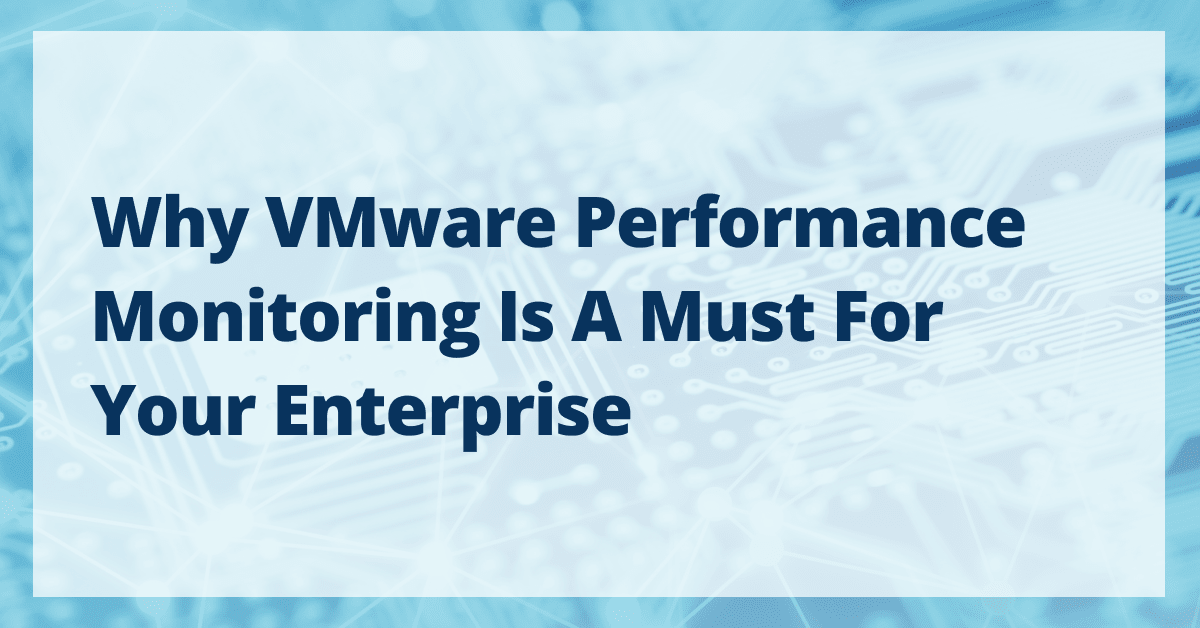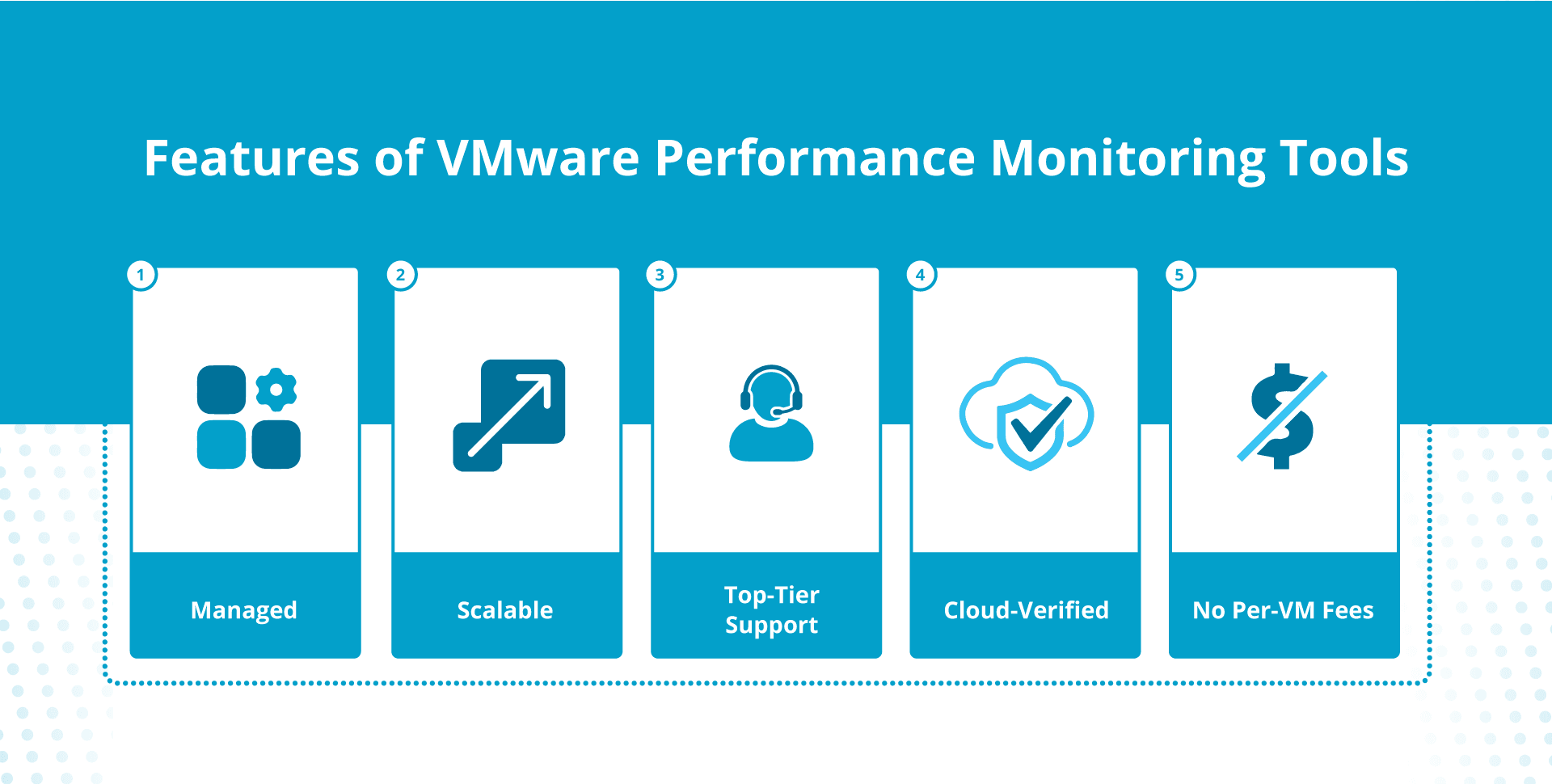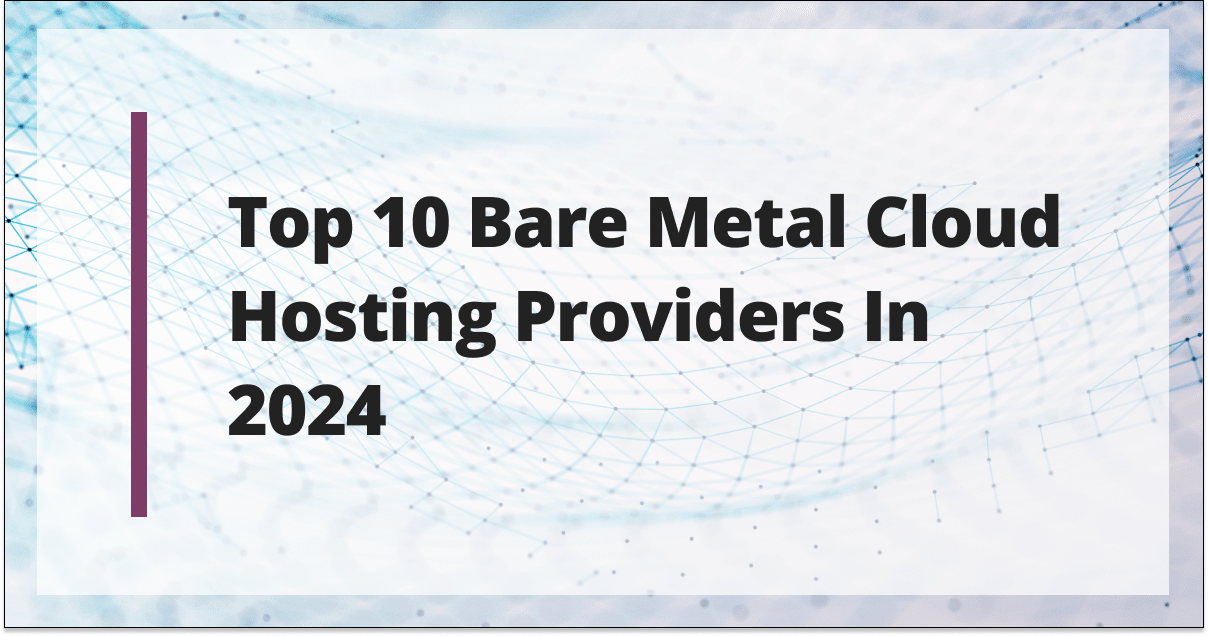
Virtual machines (VMs) are utilized by 92% of businesses. If you’re reading this, you’re probably more than familiar with these ubiquitous tools — and their limitations.
While virtual machines are useful, if not necessary for many enterprises, it’s easy to run into issues like performance bottlenecking and resource overconsumption. This is especially true if you’ve deployed a lot of VMs on one server.
Here at Liquid Web, we work with VMware — and since 79% of enterprises using or considering using a virtual environment choose VMware, you most likely do, too. As powerful as VMware is, though, it’s not immune to these problems.
But there is a solution: performance monitoring.
This advanced feature will help you track down problematic VMs in real time and troubleshoot why they’re struggling. Freeing up resources and bottlenecks means better performance, reduced latency, room for more VMs, and less money spent on server maintenance.
Understanding VMware performance monitoring
If you haven’t worked with VMware before, here’s what you need to know: VMware offers virtualization software, including VMware ESXi, an enterprise-level hypervisor used for deploying virtual machines at scale.
Unlike your typical software, ESXi is a type 1 hypervisor. It integrates directly into the bare metal server and does not require an operating system.
Virtualization allows multiple VMs to run on a single server, all sharing resources. And since ESXi doesn’t need an operating system, you can limit the resources a server uses and deploy more VMs.
As for VMware performance monitoring, it’s simple. Much like how you can monitor a computer’s resource usage and running applications with Task Manager, performance monitoring keeps an eye on all deployed VMs.
That means it keeps track of a virtual machine’s current and historical memory, processor, availability, and other vital performance metrics within the virtual infrastructure. You can also monitor the applications running on each one.
Good performance monitoring can efficiently track hundreds or thousands of VMs and identify ones taking more than their share of the resource pool.
How VMware performance monitoring helps your business
Tracking VMWare performance isn’t just practical — it can save your business. Cutting down on resource usage and efficiently using your server power can save a lot of money. It also:
- Prevents resource overuse — When VMs overuse resources, you’re burning money. With performance monitoring, you can detect the outliers and determine what’s going wrong.
- Detects strange behavior — Performance monitoring solutions alert you when a VM functions outside parameters. That helps prevent VMs from monopolizing server resources and can also detect malware and security breaches.
- Enhances capacity planning — You can use historical insights to make data-driven decisions, avoiding overprovisioning (wasting money) or underprovisioning (performance issues).
When you have more VMs than you can handle, you run into an issue known as VM sprawl. This is when you can no longer keep track of them all. Performance monitoring can help keep this issue in check.
When you offer large applications, Software-as-a-Service, reseller hosting, and other massive projects that rely on VM tech, it’s impossible to monitor it manually. Performance monitoring software saves money by identifying software issues impacting your resource usage.
The more your business relies on virtualization, the more important it is to implement robust performance monitoring.
How to monitor VMware performance
Monitoring VMware performance is crucial for maintaining the efficiency and stability of your VM environments.
Comprehensive monitoring tools such as vRealize Operations Manager can help you quickly identify problem areas, track key metrics, and alert you when things get out of hand. Combine that with best practices for VMware performance monitoring and historical performance data analysis for informed capacity planning, and you have a solid plan to keep your VMs running smoothly.
Built-in VMware performance monitoring tools

Managing a virtualized data center is challenging, so having robust performance monitoring tools at your disposal is essential. Liquid Web offers VMware Private Cloud, which has many features designed to simplify VM management, including:
- Managed and scalable — Liquid Web’s managed cloud environment helps you monitor and manage your entire virtual data center, including hardware, VMs, and the cloud platform itself. You can add resources to your cloud as you need them.
- Excellent support — Liquid Web offers industry-leading support from over 100 Red Hat Engineers.
- No per-VM fees — The scalability of your VM deployment is limited only by the available server resources within your VMware Private Cloud.
- Cloud Verified — Liquid Web holds the “Cloud Verified” certification from VMware, signifying adherence to the highest industry standards.
VMware has a steep learning curve, and managed cloud hosting can handle the setup of VMs and performance monitoring for you.
The performance monitoring tools offered by Liquid Web and VMware collect data from the key metrics listed below, analyze them for anomalies and trends, and send them back to you. You can also be alerted if anything goes wrong.
Key VMware metrics to monitor

When opening up VMware monitoring tools, there’s quite a lot of information to take in. Keep an eye on these key metrics for a good idea of your VM environment’s health.
CPU usage
A constantly capped-out CPU or an unusually high trend can lead you toward identifying a problem with your hardware or software. Keep an eye on these metrics:
- Overall CPU usage — Unless a VM is actively running intensive programs or being hit by heavy traffic, workloads where they’re spending hours at maximum CPU is unusual. That isn’t good for the health of your server, either. Keep an eye on VMs with high CPU usage for no apparent reason.
- CPU ready time — This measures when a VM is ready to use the CPU but cannot access physical resources. High metrics indicate resource contention and over-subscribing resources.
- CPU wait time — Similarly to CPU ready, this occurs when a process or thread has to wait in a queue to gain access to the CPU. Look out for long I/O wait times that can degrade performance.
Let’s look at why a VM may run at a high CPU:
- High traffic — VMs slow down when they’re hit by more traffic than they can handle, especially without technology like load balancing.
- Resource-intensive applications — Some programs take a lot of power to run, but when something suddenly needs more CPU, it’s a cause for concern. That could be because of bugs, inefficient code, or malware.
- Misconfigured background processes — Background processes like security scanning or software updates shouldn’t be very taxing, but a misconfiguration or glitch can lead to high CPU usage.
- Resource contention — When you’re running too many VMs on a server that can’t handle it, all VMs will struggle to stay afloat.
Memory usage
If you’ve ever maxed out the memory on your personal computer, you know what happens. Everything grinds to a halt, programs crash, and the entire OS can freeze. Now imagine that happening to your customers.
It’s essential to track memory usage to avoid memory overcommitment and crashing. Here are the metrics worth tracking:
- Overall memory usage — As with CPU usage, resource-intensive programs can eat up memory, although the cause may also be a memory leak.
- Memory ballooning — This reclaims memory from VMs that aren’t using it at the cost of VM performance. High ballooning degrades overall performance and indicates memory pressure.
- Memory swapping — Similarly, memory swapping is used to handle low memory but significantly impacts performance and indicates an issue if it happens frequently.
And the reasons you might encounter high memory include:
- Memory overcommitment — Allocation of too many VMs, or too intensive VMs, on a server that can’t handle it results in memory overcommitment and ruins the performance of every VM on the server.
- Memory leaks — When programs fail to release memory they’re finished using, they eat up more RAM the longer they’re left open.
- Inefficient configuration — Allocating more memory to VMs than needed may leave other VMs with nothing to work with.
Storage metrics
Keeping an eye on your IOPS (Input/Output Operations per Second) accurately indicates disk health.
A failing disk means lost data. Besides the server slowdowns an overused disk causes, you’ll want to monitor these metrics closely:
- Datastore usage/availability — An unavailable datastore means no VM provisioning, which could be a disaster in some setups. Also, look out for excessive data store usage, which leads to poor VM performance.
- Disk usage — Running out of allocated disk space is just as damaging to individual VMs as it is to the entire server.
- IOPS — High IOPS means the storage and CPU are being used excessively, which leads to VMs fighting over resources and significant slowdown. Very low IOPS indicates a failing or misconfigured disk.
The causes of high disk usage and IOPS include:
- Low disk space — Running out of disk or datastore space can result in poor application performance. Temporary files, such as updates or logging/debugging, can cause this.
- Too many applications — Too many applications and background processes running can lead to excessively high IOPS.
- File operations — Applications that constantly use automation to synchronize, back up, or copy files can cause high disk usage.
Network metrics
Lastly, network monitoring for each VM’s usage is good since unusually high network throughput can indicate a problem. Keep these metrics in mind:
- Network connectivity — This simple but essential metric tracks the stability of network access to each VM. If the network is down, there’s a problem.
- Network throughput — This is your bandwidth — how much data each VM transmits. High outliers need to be closely examined.
Some reasons you might see high network usage include:
- Data transfers — Whether thousands of people visit a website or backup files are sent to a different server, large data transfers slow down network performance.
- Too many VMs — Running too many VMs on one server leads to network congestion as they fight for resources.
- Network-intensive operations — You can expect high usage if your VM is used for content delivery or video streaming. You may also see high usage if you synchronize data or have a security program that scans network traffic.
Best practices for VMware performance monitoring
Knowing which metrics to keep an eye on can help, but you should know how to monitor them effectively. Let’s look at a few ways to enhance how you monitor VMware performance to stop VMs from getting out of control.
Set performance thresholds and alerts
Imagine coming into the office only to learn that disaster hit while you were away:
- All your VMs are down.
- One VM has been maxing resources and leaving others laggy.
- Something on the server is burning through bandwidth and racking up thousands of dollars in hosting fees.
Alerts can quickly solve this issue, ping administrators when something goes wrong, and give you or your developers time to check it out.
You can set up alerts for any parameters you can think of, like when any VM crosses a predefined threshold or goes offline suddenly. For this, you’ll need to consider the baseline performance of your VMs. This will set the standard for what is regarded as strange behavior. You can then decide what resource usage thresholds are considered critical.
Define clear objectives that your organization wants to improve on, such as reducing memory usage or improving overall performance. You can set your thresholds differently in certain areas and monitor VMs overusing specific resources.
These policies should be reviewed and updated regularly, not just once.
Analyze performance regularly
VMware performance monitoring will generate a lot of historical data. Ignoring it is a big mistake.
CPU usage, memory, storage capacity — none may seem very important as long as all VMs operate within parameters, but it’s extremely valuable information. That info tells you how many resources your business uses and if you’re wasting unused resources or constantly hitting thresholds and struggling.
Capacity planning will ensure you only have what you need to run your business efficiently and save money on unneeded resources (or not allocating enough).
These subtle historical trends can also point out a VM that may not be grossly misusing resources enough to hit a threshold but is still underperforming and costing you money.
Make sure you regularly back up and store this historical data, as it could be helpful in the future.
Train your team
Even skilled developers may need to become more familiar with the intricacies of running a large VM ecosystem.
Ensuring your IT team has the necessary knowledge to work with VMware is a valuable investment — and prevents your VM environment from crashing and burning if something goes wrong.
VMware offers courses to help developers learn how to work with it.
While this step is a little less necessary if you use managed private cloud hosting, it’s still important to have developers who understand VMware as you deploy applications and servers on the private cloud.
Final thoughts
VMware is omnipresent, and it’s an excellent tool for deploying VMs. But when your virtual machines start competing for resources, knowing what to do is hard.
Thanks to VMware performance monitoring, you can identify and eliminate whatever problem is slowing your server down. By tracking CPU memory, storage, and network usage for each VM, you can quickly find problem areas and plan how to use your server space more efficiently.
With a managed cloud solution, it becomes even easier to set up VMs and monitor their performance. Liquid Web offers VMware private cloud, which comes with robust VM monitoring. Look at what we have to offer; it won’t disappoint.
[ad_2]
Source link






